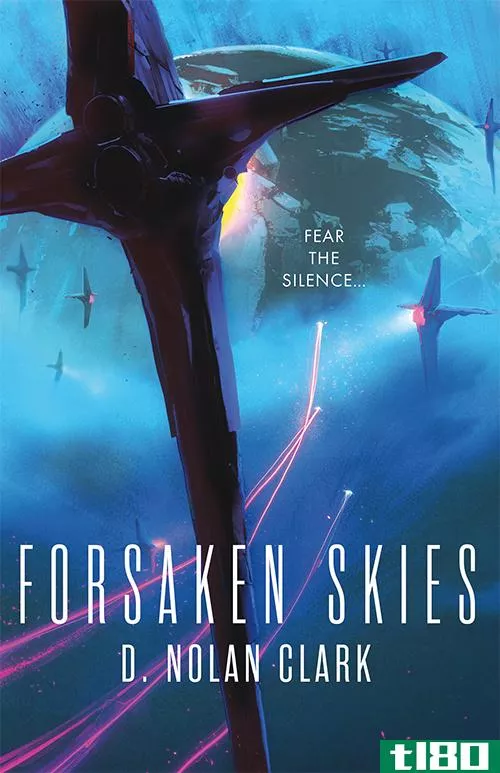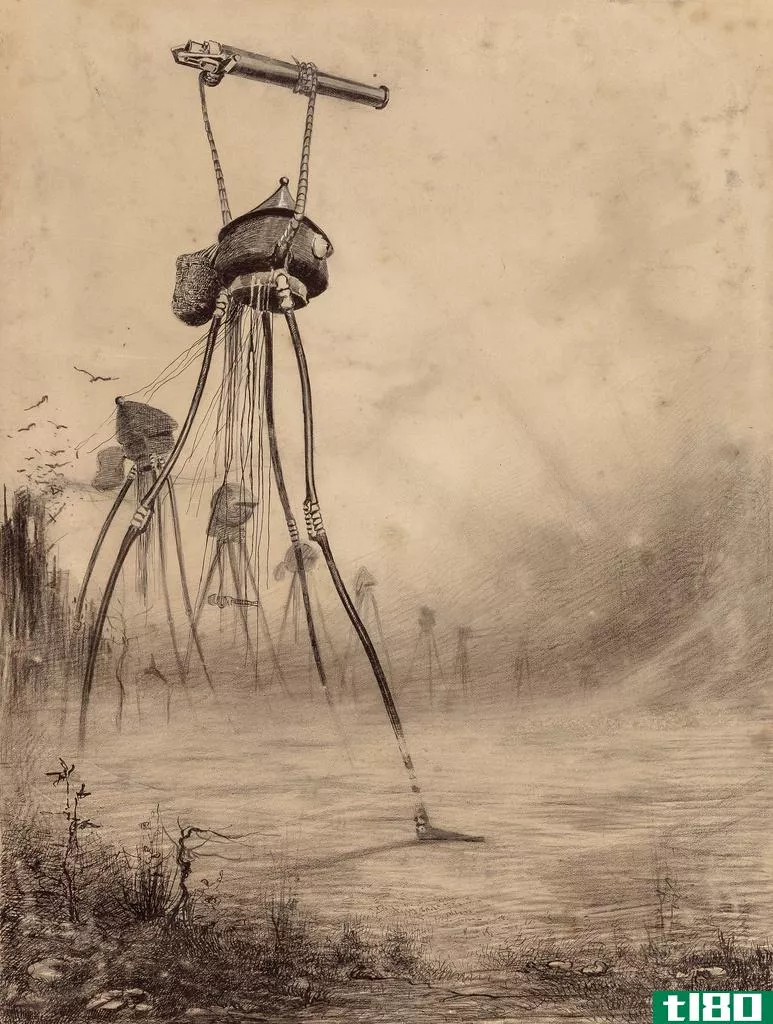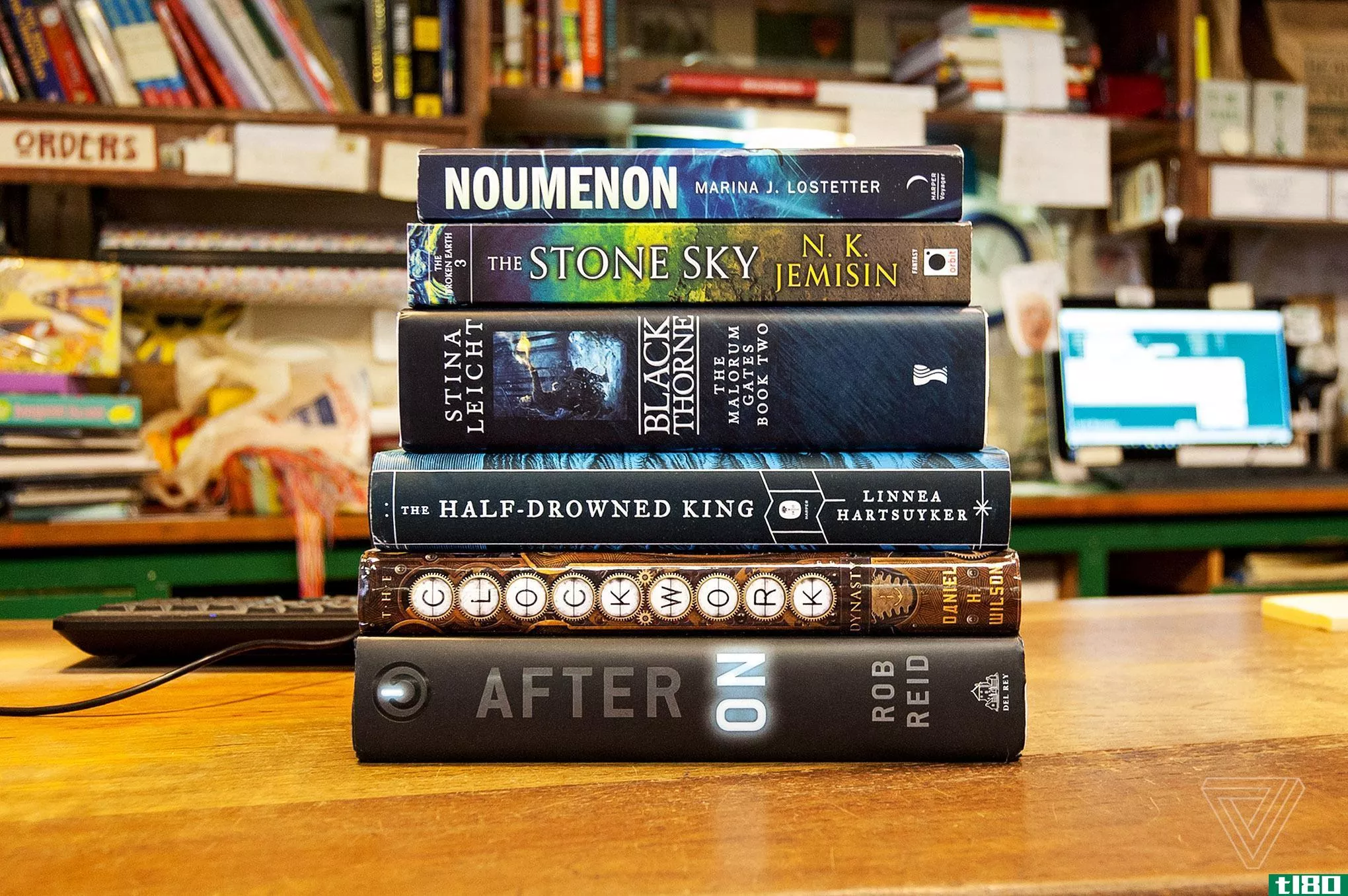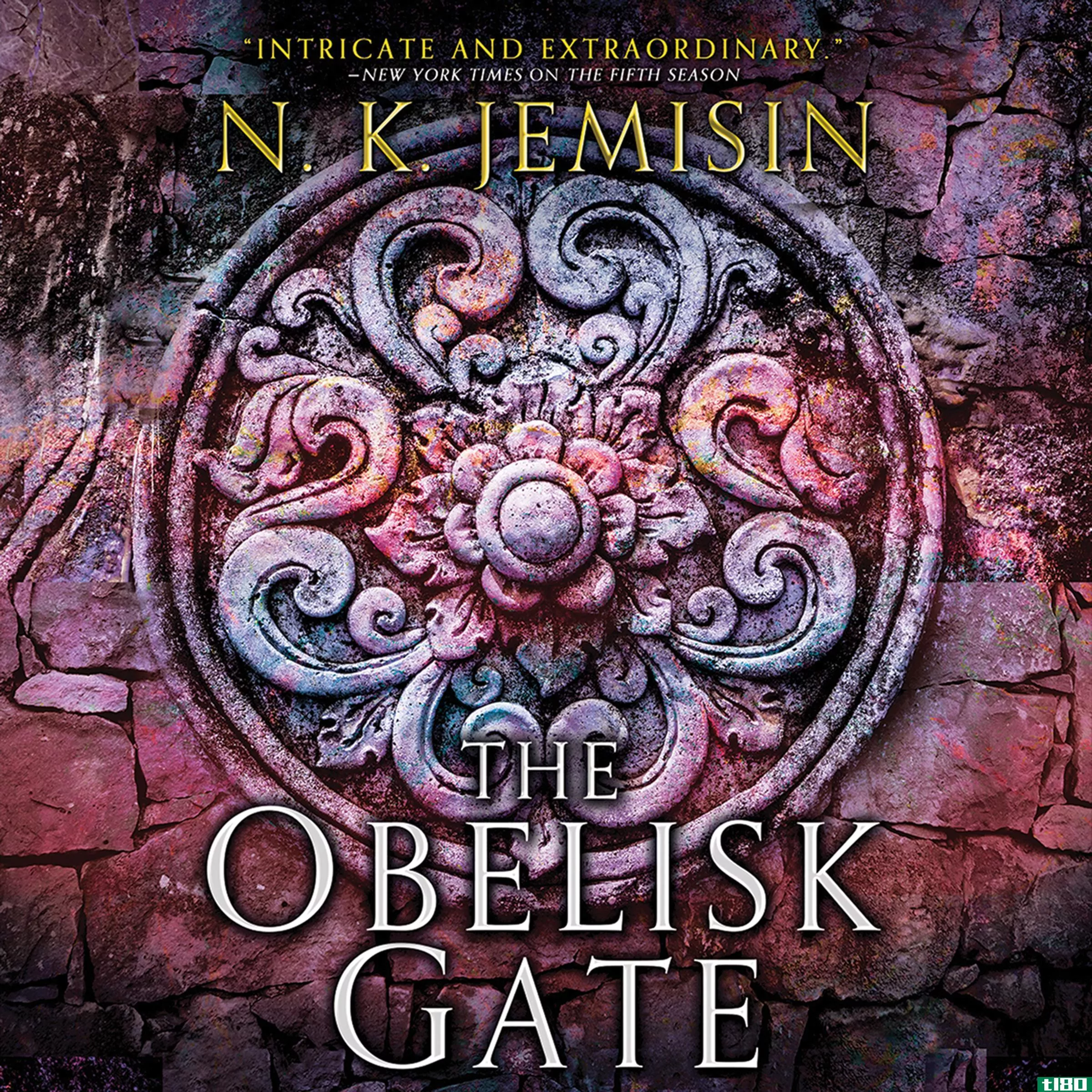外星人在彼得f。汉密尔顿的科幻小说《救赎》
彼得F。汉密尔顿最为人所知的是他关于人类在宇宙中遥远未来的漫无边际的太空歌剧,如《现实障碍》、《**的上帝》、《堕落的龙》和《大北路》。他的下一部小说《救赎》是一部新三部曲的开篇,预计将于今年晚些时候出版。这既关乎人类遥远的未来,也关乎我们如何实现这一目标。
拯救遵循两个故事情节:第一个故事发生在2204年,人类已经遍布整个银河系,这要归功于一个先进的大门系统,它允许人类在行星之间瞬间旅行。宇宙飞船几乎已经过时,但当一艘坠毁的外星飞船在一个新发现的世界上被发现时,一个小组被派去调查它和它携带的奇怪货物。另一个故事发生在51世纪,讲述的是一群经过基因改造的士兵,他们被设计用来对抗一个决心猎杀人类直至灭绝的远古敌人。
《拯救》于2018年9月4日在书店上架,我们有它的第一个摘录:
Earth Calling
Drifting through interstellar space, three light-years out from the star 31 Aquilae, the Neána abode cluster picked up a series of short, faint electromagnetic pulses that lasted intermittently for eighteen years. The early signatures were familiar to the Neána, and faintly worrying: nuclear fission detonati***, followed seven years later by fusion explosi***. The technological progress of whoever was detonating them was exceptionally swift by the usual metric of emerging civilizati***.
Metaviral spawn chewed into the cometry chunks that anchored the vast cluster, spinning out a string of flimsy receiver webs twenty kilometers across. They aligned themselves on the G-class star fifty light-years away, where the savage weap*** were being deployed.
Sure enough, a torrent of weak electromagnetic signals was pouring out from the star’s third planet. A sentient species was entering into its early scientific industrial state.
The Neána were concerned that so many nuclear weap*** were being used. Clearly, the new species was disturbingly aggressive. Some of the cluster’s minds welcomed that.
Analysis of the radio signals, now becoming ****ogue audiovisual broadcasts, revealed a bipedal race organized along geo-tribal lines, and c***tantly in conflict. Their specific biochemical composition was one that, from the Neána perspective, gave them sadly short lives. That was posited as the probable reason behind their faster than usual technological progression.
That there would be an expedition was never in doubt; the Neána saw that as their duty no matter what kind of life evolved on distant worlds. The only question now concerned the level of assistance to be offered. Those who welcomed the new species’ aggressive qualities wanted to make the full spectrum of Neána technology available. They almost prevailed.
The spherical insertion ship that left the cluster—it didn’t know if it was one of many being dispatched, or alone—measured a hundred meters in diameter, a mass comprised of active molecule blocks. It spent three months accelerating up to thirty percent of light speed along a course to Altair—a trip that took just over a hundred years. During the lonely voyage the ship’s controling sentience continued to monitor the electromagnetic signals coming from the young civilization that was its ultimate goal. It built up an impressive knowledge base of human biology, as well as a comprehensive understanding of their c***tantly evolving tribal political and economic structures.
When the ship reached Altair, it performed a complex flyby maneuver, which aligned it perfectly on Sol. After that, the physical section of the sentience’s memory that contained all the astrogration data of the flight from the cluster to Altair was jettisoned and the c***tituent blocks deactivated. Its weakened atomic structure broke apart into an expanding cloud of dust, which was quickly dispersed by Altair’s solar wind. Now, if it was ever intercepted, the insertion ship could never betray the position of the Neána abode cluster—for it no longer knew where it was.
The last fifty years of the voyage were spent formatting an emplacement strategy. By now, human ingenuity had produced starships that were flying past the insertion ship in the other direction, in quest of new worlds out among the stars. The information blasting out from Earth and the solar system’s asteroid habitats had become increasingly sophisticated, yet, conversely, there was a lot less of it. Radio signals had been in decline since the internet had begun to carry the bulk of human data traffic. For the final twenty years of the insertion ship’s approach it received little apart from entertainment broadcasts, and even those were shrinking year by year. But it had enough.
It flew in south of the ecliptic, shedding cold mass in irregular bursts like a black comet—a deceleration maneuver that took three years. This was always the riskiest part of the voyage. The humans’ solar system was scattered with a great many astronomical sensors scanning the universe for co**ological abnormalities. By the time it passed the Kuiper belt, the insertion ship was down to twenty-five meters in diameter. It emitted no magnetic or gravitational fields. The outer shell was fully radiation absorbent, so there was no albedo, making it invisible to any telescopes. Thermal emission was zero.
No one perceived its arrival.
Inside, four biologics began to grow within molecular initiators, attaining physical patterns the ship’s sentience had designed, based on the information it had acquired during the long voyage.
They were human in size and shape; skelet*** and organs carried the mimicry down to a biochemical level. Their DNA was equally authentic. You would have to go a lot deeper into the cells to find any abnormality; only a detailed audit of the organelles would reveal alien molecular structures.
It was the minds of the biologics that gave the insertion ship the greatest difficulty. Human mental processes were complex verging on paradoxical. Worse, it suspected the performances in all the fictional dramas it received were overemphasizing emotional resp***es. So it c***tructed a stable primary architecture of thought routines, while including a fast learning and adaptive integration procedure.
As it closed to within a million kilometers of Earth, the insertion ship discarded the last of its reaction mass as it performed a final deceleration maneuver. Now it was basically just falling toward the southernmost tip of South America. Tiny course correction ejecta refined the descent vector, steering it at Tierra del Fuego, which was still thirty minutes from greeting the dawn. Even if it was detected now, it would simply appear to be a **all chunk of natural space debris.
It hit the upper atmosphere and began to peel apart into four pear-shaped segments. The remaining matter broke away in fizzing sparks that produced a short-lived but beautiful starburst display streaking through the mesosphere. Below it, sheltered under their blanket of thick winter cloud, the residents of Ushuaia, the southernmost city on Earth, remained oblivious of their interstellar visitor.
Each segment carried on down, aerobraking with increasing severity as the atmosphere thickened around them. They slowed to subsonic velocity three kilometers above the surface, plunging through the clouds, still unobserved by anyone on the planet.
The segments were aimed at a **all inlet a few kilometers west of the city, where, even in AD 2162, the rugged land lay unclaimed by developers. Two hundred meters from the shore, four tall splash plumes shot up into the air like thick geysers, crowning and splattering down on the slushy ice that bobbed along the waters of the Beagle Channel.
The Neána metahumans floated to the surface. All that now remained of the insertion ship landing segments was a thick layer of active molecule blocks covering their skin like a pelt of translucent gel, insulating them from the dangerously cold water. They began to swim ashore.
The beach was a narrow strip of gray stones cluttered with dead branches. A dense woodland occupied the slope above it. The aliens scrambled a short way up the incline as the pale dawn light began to seep through the murky clouds. Their protective layer liquidized, draining down into the stones where it would be flushed away by the next high tide. For the first time, they drew air down into their lungs.
“Oh, that is cold!” one exclaimed.
“Good classification,” another agreed through chattering teeth. “I’ll go with it.”
They looked at one another in the gray light. Two were crying from the emotional impact of arrival, one was **iling in wonder, while the fourth appeared singularly unimpressed by the bleak landscape. Each carried a **all pack of outdoor clothing copied from a winter wear ad broadcast eighteen months earlier. They hurried to put it on.
When they were fully dressed, they set off along an ancient track up through the trees until they came to the remnants of National Route Three, which led to Ushuaia.
- 发表于 2021-08-22 08:57
- 阅读 ( 96 )
- 分类:互联网
你可能感兴趣的文章
12个最好的免费有声读物从忠诚的书你应该听
... 这本书的正式书名是克莱恩·汉密尔顿委员会,是该委员会调查2001年9月摧毁美国的恐怖袭击的录音记录。 ...
- 发布于 2021-03-19 04:38
- 阅读 ( 231 )
新预告片:比尔和泰德面对音乐,黑色是国王,他的黑暗材料,等等
...是说,不管影院是开放的)。9月1日出版。 黑就是王 继汉密尔顿之后,《黑是王》是签约迪士尼Plus的下一个重要原因:碧昂丝的一张新视觉专辑,应该与她去年的《狮子王》翻拍作品有关。它看起来和碧昂丝的迪斯科舞曲中的...
- 发布于 2021-04-18 15:57
- 阅读 ( 209 )
汉密尔顿是审查迪士尼加;林曼纽尔米兰达给两个他妈的
汉密尔顿在其最初的百老汇咒语中使用了三个“操”的例子,但下个月即将上映的电影《迪士尼+》将放弃两个“操”的用法,以安抚评级委员会和迪士尼。 **人林曼纽尔·米兰达(LinManuel Miranda)周一宣布,为了把这...
- 发布于 2021-04-19 04:27
- 阅读 ( 138 )
新冒险:本月要读什么科幻小说和幻想小说
...书店,等待探险家。新冒险是一个新的周末系列,将预演科幻小说和幻想小说的未来一个月。 这个月,我们有来自俄罗斯和古巴等地的书籍,第一次世界大战的故事,深空歌剧,还有更多! 7月1日 《命中...
- 发布于 2021-05-06 12:05
- 阅读 ( 227 )
新冒险:9月出版的最令人兴奋的科幻小说和幻想书中的24本
...会是一个好故事。 9月27日 一个没有星星的夜晚。汉密尔顿 彼得F。汉密尔顿以一些艰难的科幻冒险而闻名,他的最新作品是他2014年小说《超越梦想的深渊》的续集。行星Bienvenido已经从虚空中回到了正常的空间,但是...
- 发布于 2021-05-07 09:50
- 阅读 ( 187 )
33本科幻小说和奇幻小说,大家都会在2017年谈论
...走的是一条稍有不同的道路:他复活了纸浆作家埃德蒙·汉密尔顿的未来船长,并带他回来进行一次新的冒险。阿克赖特特别沉迷于科幻小说的知识和历史,这应该是一个有趣的故事来读。 索龙由蒂莫西扎恩-4月11日 去年秋天,...
- 发布于 2021-05-09 06:26
- 阅读 ( 306 )
《广袤》是电视上最具政治意义的科幻剧
...)上发布的内容相比,它显得黯然失色。原生动物是一种外星生物,基本上把空间站上的贝尔特人变成了僵尸。我们了解到(这一系列书籍的追随者们都知道接下来会发生什么),一家大公司正在开发这个原分子,而且它有着改...
- 发布于 2021-05-09 16:40
- 阅读 ( 124 )
以下是2017雨果奖提名者
...媒体。雨果奖比星云奖在更广泛的媒体范围内认可幻想和科幻小说的成就,星云奖由美国科幻和幻想作家管理,更具体地说是专注于出版作品。也就是说,2016年的两个作品奖在提名名单中都有一些令人难以置信的受欢迎的多样...
- 发布于 2021-05-10 14:09
- 阅读 ( 249 )
探索广袤:爆炸性的一季结局巩固了它作为电视上最好的科幻节目之一的地位
...子实验发生了险恶的转变。在第一季里,负责给爱神植入外星人虫子的公司竟然感染了孩子,把他们变成了武器,就像本季早些时候袭击博比和她的团队的那个。 在这一季的最后两集里,霍尔顿和普拉克斯搭上了罗西纳特号的...
- 发布于 2021-05-10 19:48
- 阅读 ( 147 )
英国广播公司正在制作一部维多利亚时代的世界大战电视连续剧
...直接改编视频保留了这一时期的背景。 《世界大战》是科幻小说中比较重要的作品之一,它的时代背景对原著很重要,因为它是被称为“入侵文学”的整个小说运动的一部分,在这场运动中,英国勇敢地抵御敌对的外来者。这...
- 发布于 2021-05-11 02:27
- 阅读 ( 180 )















